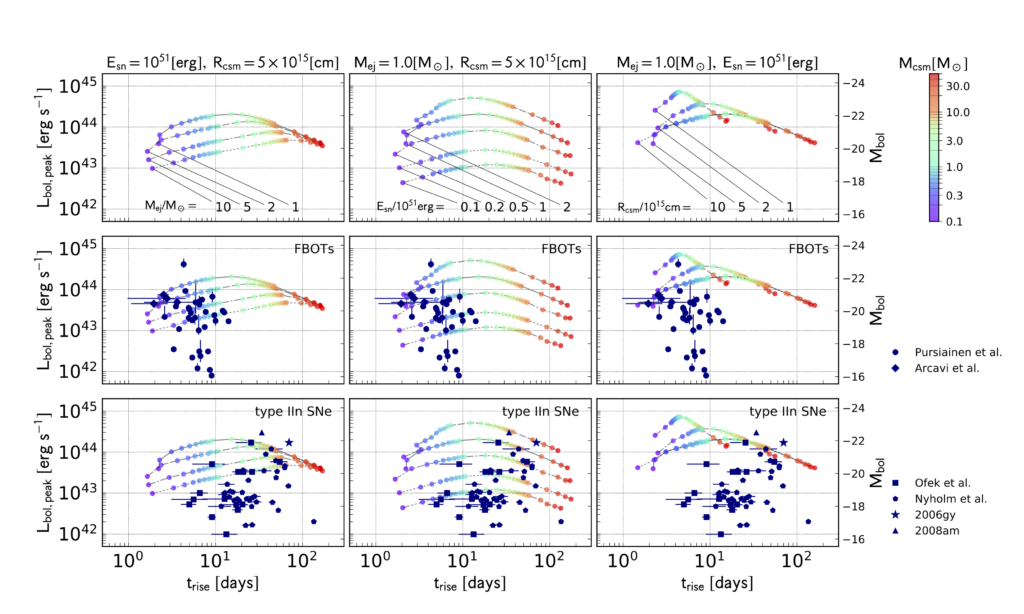Division of Science, NAOJ
Systematic radiation-hydrodynamic simulations of transients powered by circum-stellar interaction

A class of core-collapse supernovae known as type IIn or Ibn supernovae is thought to be interacting with the dense gas around the exploding star (circum-stellar medium; CSM) as their spectral features indicate. In addition, recent transient survey programs found enigmatic transients named “Fast Blue Optical Transients (FBOTs)”, which are characterized by fast evolutionary timescales and blue spectra. CSM-powered emission is also one of the leading scenarios of FBOTs. One big mystery about these CSM-powered transients is how such massive CSMs could be produced before the death of stars. Although the solution remains unclear, there are a lot of on-going and planned transient survey projects, such as Zwicky Transient Facility and Vera C. Rubin Observatory. So, we will be seeing an increasing number of CSM-powered transients, which would provide us some hints on their origin.
Dr. Akihiro Suzuki (NAOJ Fellow), Dr. Takashi Moriya, and Dr. Tomoya Takiwaki of Division of Science, NAOJ performed 1D spherical radiation-hydrodynamic simulations of supernova ejecta colliding with a CSM with a various set of parameters characterizing the CSM and ejecta (mass, energy, and CSM radius). They clarified how the assumed parameters determine characteristic quantities of the light curve, such as the peak luminosity and rise time. The figure shows the model calculations in the peak-luminosity vs rise time plane (top) and their comparison with FBOTs (middle) and Type IIn supernovae (bottom). The three columns present models with different parameter sets. We can estimate the parameters of supernova ejecta and CSM by comparing the theoretical model grids and the light curve properties transients. Furthermore, comparisons between the theoretical models and observations could lead to hidden correlations between the parameters, which is closely linked to the origin of CSMs. A more thorough investigation would be possible with increased samples in the near future. This result has been published in The Astrophysical Journal.
2020/08/19
Reference:
Suzuki, A., Moriya, T. J., and Takiwaki, T., The Astrophysical Journal, 889, 56 [ADS] [doi]
Contact:
Akihiro Suzuki [personal website]

